The celebrated work of photographer Robert Capa, famous for capturing some of the world's most fearsome battles, who would have been 100 this week
-
•Robert Capa was on Omaha beach for the Allied invasion of Normandy in June 1944 and took 11 iconic photographs
-
•Perhaps his most famous picture is of a Republican soldier being killed during the Spanish Civil War
-
•Capa was killed in 1954 when he stepped on a landmine when covering the war in Indochina
By Steve Nolan
PUBLISHED: 17:20, 19 October 2013 | UPDATED: 19:00, 19 October 2013
His remarkably candid images of some of the most violent conflicts of the first half of the 20th century were unlike any seen in the world of photojournalism before and led to him being labelled the 'greatest war photographer in the world'.
But Robert Capa is said to have hated the subject that he made his name shooting with his trusty 35mm camera.
The photographer, who would have been 100 this week, was there when Allied troops stormed the beach at Omaha in 1944, and witnessed the brutal civil war that ripped apart Spain for much of the later 1930s.
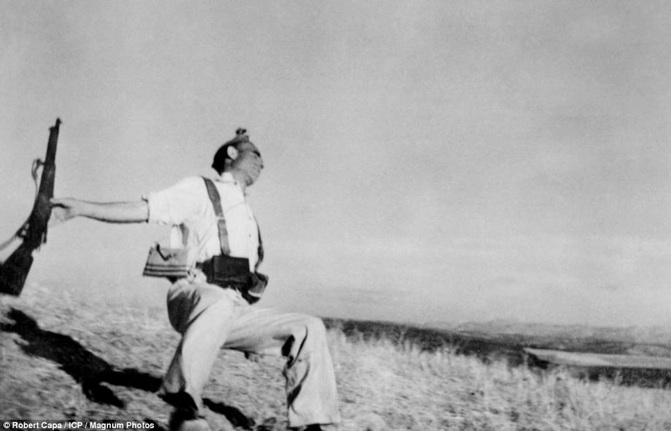
Iconic: Perhaps Robert Capa's most famous photograph - Death of a Loyalist Soldier - which was taken in Cordoba, Spain in 1936. Capa would have been 100 this week

Welcoming: This picture of civilians lining the streets of Monreale just outside Palermo, Italy, was taken in July 1943
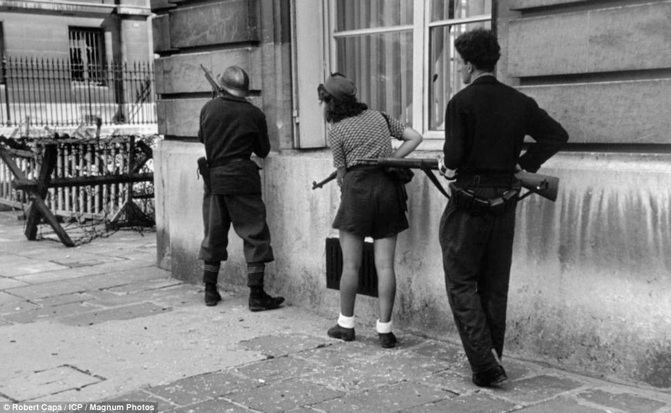
Joint effort: In Paris in 1944 following the entry of the French 2nd Armored Division, numerous pockets of German snipers had to be rooted out - many civilians joined troops in the fighting
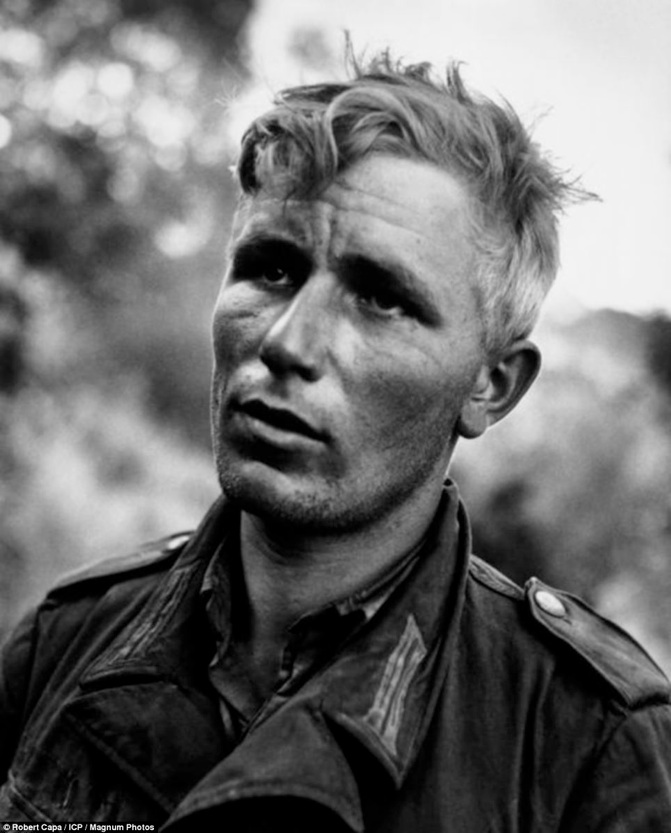
POW: A German soldier after he had been captured by American troops near Nicosia in July 1943
He was on hand to chronicle some of the most important moments in world history in the last century and his photos of the D Day landings in particular offer the most vivid depiction of the bloody but crucial invasion of France.
Capa was born Andre Friedmann in Hungarian capital Budapest in 1913 but moved to Berlin when he was 17 enrolling in the Deutsche Hochschule Fur Politik where he studied journalism and political science while working part time in a dark room.
He remained in Berlin until Adolf Hitler was appointed Chancellor of Germany in 1933 and the rise of the Nazis gained pace, moving to Paris.
Along with his companion Gerda Jaro, Capa made regular trips to Spain between 1936 and 1939 to photograph the Spanish Civil War.
During that time he took arguably his most famous photograph - Death of a Loyalist Soldier - which graphically depicted the death of anarchist Federico Borrell García.
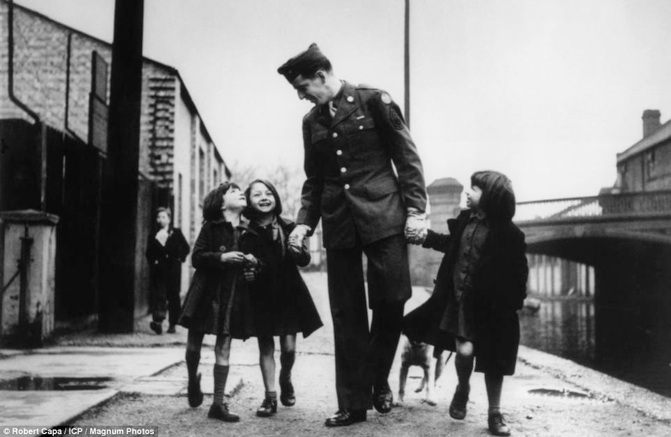
Poignant: An American soldier pictured smiling and walking hand in hand with three British orphans who were adopted by his unit
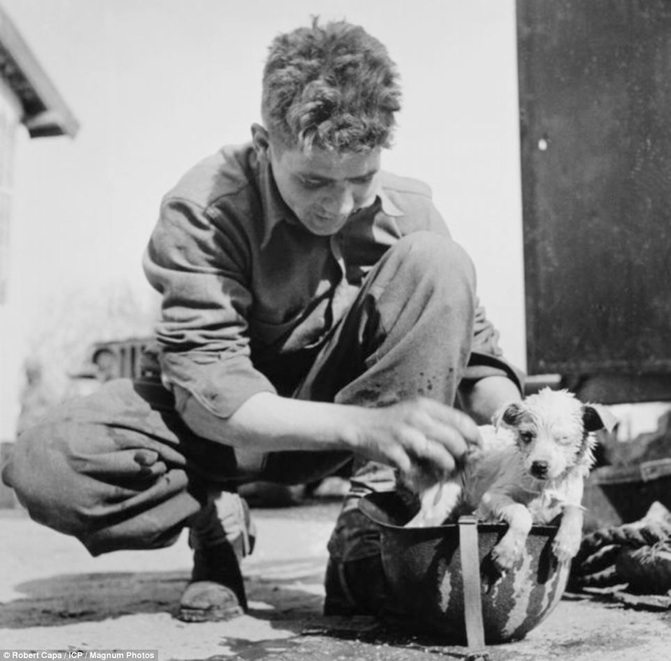
Faithful companion: An American soldier pictured petting a puppy during the Second World War
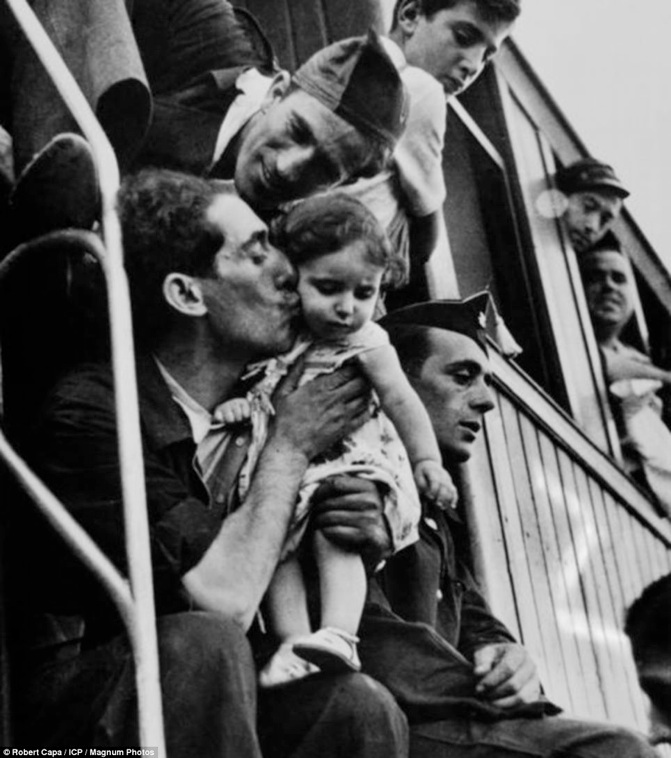
Goodbye: Spanish soldiers bid farewell to their loved ones before the departure of a military train to the Aragon front
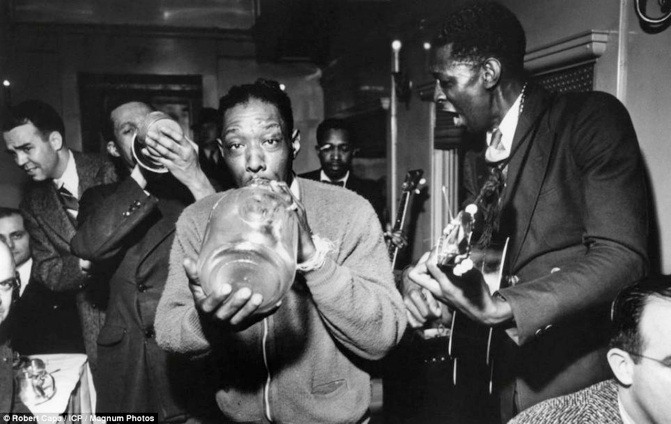
Musical: This picture was taken on a train between Memphis and Hot Springs in the U.S in 1940
He also travelled to China in 1938 to document resistance to the Japanese invasion there.
The Picture Post described him as the 'greatest war photographer in the world' later the same year.
Capa fled to America when the Second World War started and began working as a freelance photographer for LIFE, Time and several other publications.
From 1941 until 1946, Capa was war correspondent for LIFE and Collier's and travelled with the U.S Army.
He captured Allied victories in North Africa, the Normandy landings in 1944 and the capture of Leipzig, Nuremberg and Berlin.
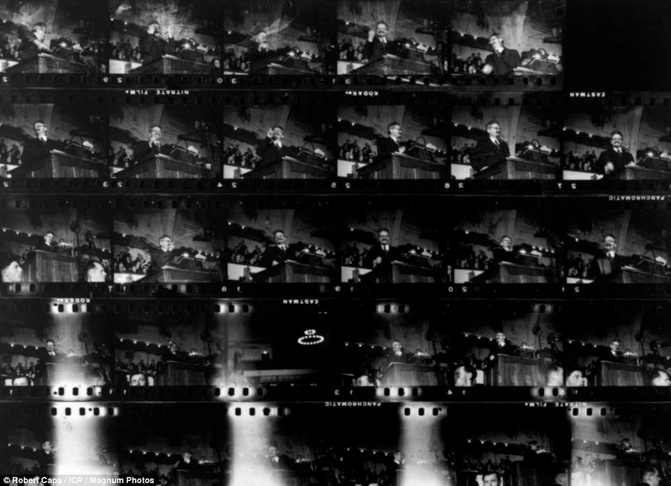
Famous face: Negatives showing Leon Trotsky lecturing in Copenhagen in November 1932
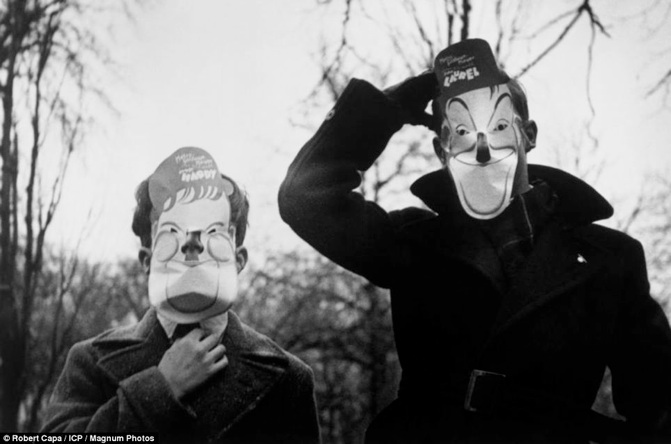
Funny men: Capa took this image of members of the Laurel and Hardy fan club in Paris in 1937
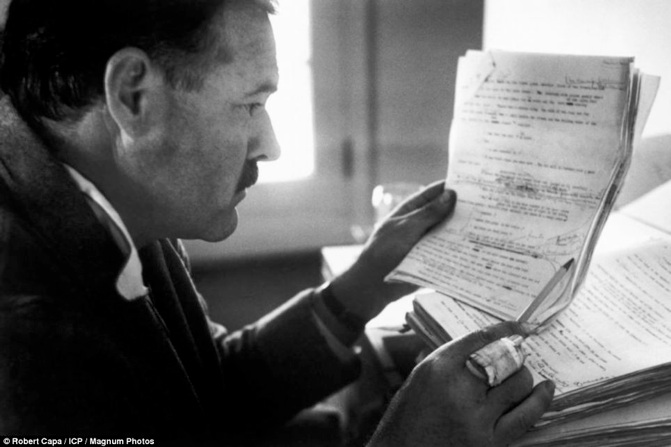
Famous subject: Writer Ernest Hemmingway pictured in Sun Valley, Idaho, in 1940
Following the war, he co-founded the Magnum photo agency before heading to Israel to capture the turmoil surrounding the country's declaration of independence between 1948 and 1950.
Not just a war photographer, Capa also met and photographed the likes of Pablo Picasso, Ernest Hemmingway and Leon Trotsky.
The photographer became a casualty of war himself in 1954.
Capa travelled to Hanoi to cover the French war in Indochina but was killed when he stepped on a landmine shortly after arriving.
He was posthumously awarded the Croix de Guerre with Palm by the French and the Robert Capa Gold Medal Award for excellence in the field of photojournalism was established the year after his death.
THE MAGNIFICENT ELEVEN: HOW ROBERT CAPA IS CREDITED WITH TAKING THE MOST STUNNING SHOTS OF D DAY LANDINGS AND HOW ALMOST ALL OF HIS PHOTOGRAPHS WERE DESTROYED
Robert Capa's 11 surviving close up photographs of the Omaha beach landings on June 6 1944 earned the nickname the 'Magnificent Eleven' but he had in fact taken 106 photographs while wading through the water.
The images were sent to Life magazine's office in Britain where picture editor John Morris told staff in the dark room to 'rush!' as they did the developing.
In their haste, worker Dennis Banks shut the doors on a wooden locker where the film was drying and 95 of the images melted as the negatives were destroyed.
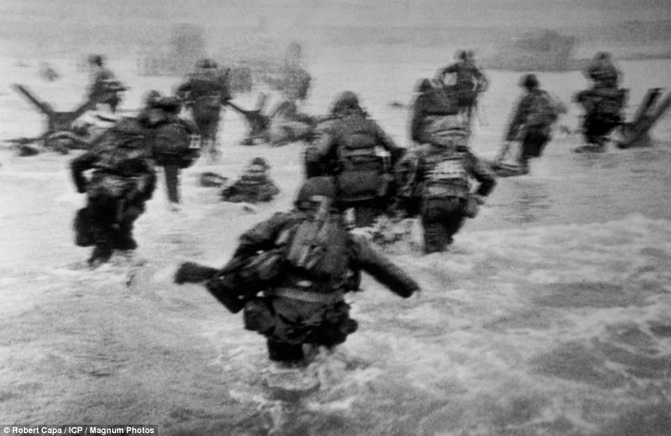
Iconic: One of Capa's 11 surviving photos of Allied troops invading Normandy in June 1944
Three whole rolls were lost, and more than half of the fourth.The useless film was tossed in a dustbin that same night and lost forever.
There were no other pictures taken from so close to the frontline landings on D-Day so The Magnificent Eleven provide the only enduring images from Normandy.
He later wrote in his book, called Slightly out of Focus: 'The men from my barge waded in the water. Waist-deep, with rifles ready to shoot, with the invasion obstacles and the smoking beach in the background gangplank to take my first real picture of the invasion.
'The boatswain, who was in an understandable hurry to get the hell out of there, mistook my picture-taking attitude for explicable hesitation, and helped me make up my mind with a well-aimed kick in the rear. The water was cold, and the beach still more than a hundred yards away.'
He dived for cover behind a steel object before heading onward in the water for a disabled American tank as he snapped away furiously.
The photographer held his camera high above his head to stop his precious film being damaged and later ran towards an incoming landing craft. He was hauled aboard and spirited away to England where most of his shots were inadvertently destroyed in the developing room.